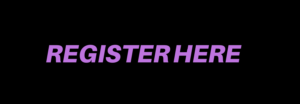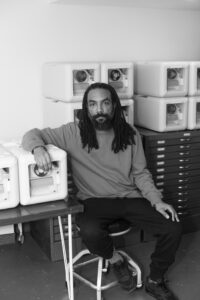SSCAC is thrilled to host artists Eric Von Haynes and Angela Davis Fegan for an on site letterpress print activation, artist Andrea Yarbrough for a viewing of her PACE Mural Arts outdoor installation commission, and John Pendelton of Planks and Pistils!
Participants at our Juneteenth program will be able to print letterpress broadsides with Eric Von Haynes and Angela Davis Fegan, using a showcard table top press and moveable wood type. Join us to pull a print of your very own to take home in celebration of the intersecting struggles for Black and Queer liberation in honor of Pride month and Juneteenth.
A slogan will be written and specially designed by artist Angela Davis Fegan in advance and will include a blank space for attendees to add what liberation looks like for them! We will have an array of brightly colored papers to choose from and will hang prints to dry along the front fence of our building to activate the space and entice potential participants.
Artist Andrea Yarbrough’s forthcoming installation, Collective Steps is an homage to the scores of Black women committed to sustaining the South Side Community Arts Center. Centered on mapping the stories of understudied Black women, Yarbrough’s approach has been focused on Fern Gayden, who was a leader, writer, and organizer. A founding member of the South Side Writers Group in the 1930s, Fern Gayden’s long and diverse career included leadership roles in the Women’s International League for Peace and Freedom and the South Side Community Art Center.
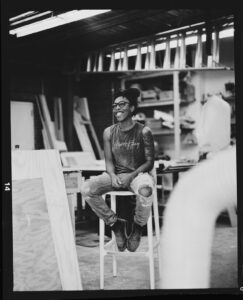
Andrea Yarbrough, SSCAC’s 2nd Artist Catalyst Awardee, is a multi-disciplinary maker, curator, and educator based on the South Side of Chicago nurturing sites of care through a blend of urban agriculture, civic engagement, and art praxis. Her praxis is embodied through the collaborative placekeeping initiative in ℅: Black women (in care of Black women), bringing together writers, curators, farmers, mamas, dancers, organizers, teachers, cultural producers, youth, and visual artists, to collectively exhume the (in)visibility of care for Black women. Andrea’s process transforms quotidian materials, slated for waste streams, into designed and utilitarian objects that serve as community resources, and incorporates the impact of solidarity and circular economies at the material, individual, and communal scales. By constructing functionally designed objects, cultivating land, archiving and documenting histories of Black women, and curating exhibitions and public programs, her socially-engaged practice exemplifies how communities can reclaim and reconstruct their surroundings while navigating agency and ownership over underutilized space.
Andrea’s commission is supported by the Public Art & Civic Engagement Capacity Building Initiative, granted to the South Side Community Art Center from Mural Arts Institute, a program of Mural Arts Philadelphia.
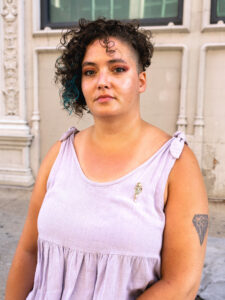
Angela Davis Fegan (she/they) is a native of Chicago’s South Side. She received her BFA in Fine Arts from New York’s Parsons School of Design and her MFA in Interdisciplinary Book and Paper Arts from Columbia College Chicago. Angela has mounted shows at Galerie F, Chicago Artists’ Coalition, the DePaul Art Museum, The Center for Book Arts (NY), the University of Chicago’s Arts Incubator and Center for the Study of Gender and Sexuality, the Hyde Park Art Center, SAIC’s Sullivan Galleries, Columbia’s Glass Curtain Gallery, SPACES (OH) and Revolve (AVL).
She has held residencies at the Chicago Artists’ Coalition, F4F, Connecticut College, the Hambidge Center (GA), Revolve (NC), and Project Row House (TX). Her work has been selected for book covers including The Truth About Dolls by Jamila Woods, Secondhand by Maya Marshall, and All Blue So Late by Laura Swearingen-Steadwell. Her lavender menace poster project has been written up by The Offing (LA Review of Books), Hyperallergic, Chicago Magazine, the RedEye, Go Magazine, Pop Sugar, the Chicago Reader, and Newcity.
Eric Von Haynes (he/him) is a multifaceted creative who merges traditional and modern printing methods and aesthetics in his work. While design and printmaking are Eric’s passions, he is energized by collaborations and the ideas and challenges that come from working within the community.
In 2007, he established Flatlands Press, a platform that produces art objects and printed ephemera such as artist books and periodicals, providing artists worldwide with opportunities to exchange ideas and spark conversations. Eric is currently serving as the President of the Chicago Printers Guild, an Artist in Residence at the Chicago Art Department, and a Co-founder and core organizer with the Love Fridge Network, a mutual aid group that promotes food sovereignty and community care.
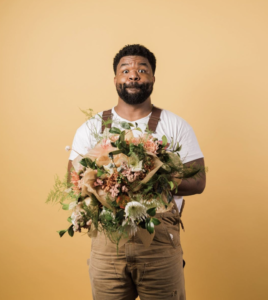
John Pendleton, founder of Planks and Pistils. Planks & Pistils exists to design high quality floral art that evokes a social and emotional connection to Black freedom, creativity, self-care and growth.
Originally from Grove Hill, Alabama, John’s love for woodworking and flowers began with his parents. “Planks” honoring his woodworker father who he shadowed in the wood shop and “Pistils” (female reproductive organ of the flower) honoring his mother whose orange rose bush he watered.



